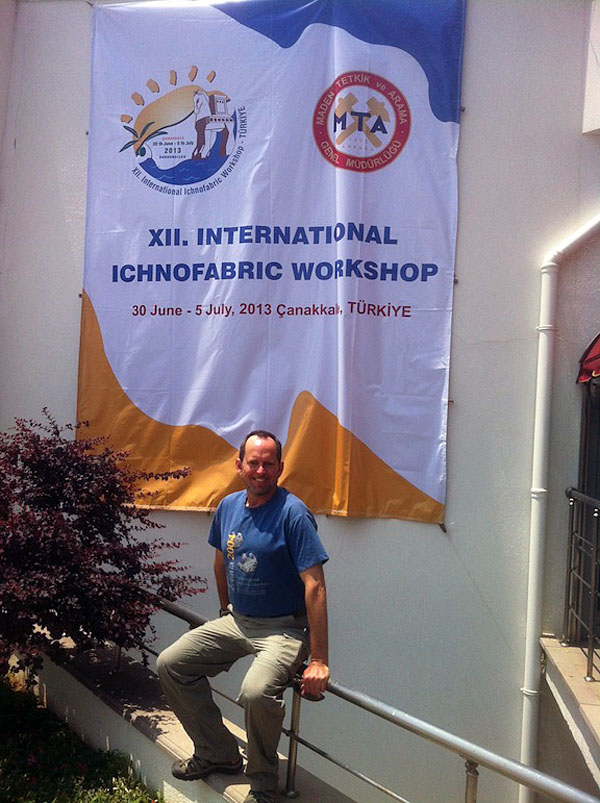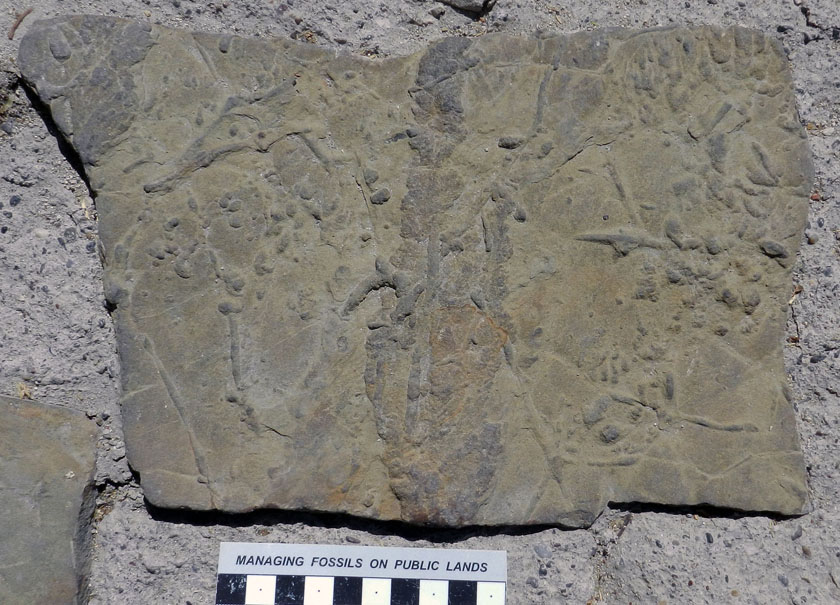After a week of traveling and “touristing” in Turkey with my wife Ruth, which included a 16+ hour overnight bus ride from Goreme to Çanakkale (thus proving that “bus lag” is a real thing), it is now time to learn some ichnology. Every two years, ichnologists from around the world – normally 30-40 people hailing from 10-15 countries – gather for the 2013 International Ichnofabric Workshop which consists of six days of talks, field trips, and congenially conducted arguments about trace fossils, traces, and ichnology in general. The workshop, which I mentioned in the next-to-last chapter of my book (Life Traces of the Georgia Coast) is typically held in some beautiful place with lots of trace fossils and beer nearby (and not necessarily in that order of priority). This time is taking place in Çannakale – located on the western side of Turkey, across from Gallipoli. [Darth Vader voice] The ichnologists are here: I can sense them. Ichnologists, such as this one (who, incidentally, owes me money) are emerging from their burrows everywhere – much like periodical cicadas – to discuss ichnology here in Çanakkale, Turkey. (Photograph by Ruth Schowalter.)
[Darth Vader voice] The ichnologists are here: I can sense them. Ichnologists, such as this one (who, incidentally, owes me money) are emerging from their burrows everywhere – much like periodical cicadas – to discuss ichnology here in Çanakkale, Turkey. (Photograph by Ruth Schowalter.)
Based on the program, most of the talks will be about marine invertebrate trace fossils and their uses in interpreting ancient animal behavior and their environments, although a few will also talk about how ichnofabrics – the sum effect of tracemakers on a given substrate, such as sediment or rock – can be applied to learning more about environmental change and evolution. You know, that weighty stuff we natural scientists crave doing.
 So what the heck is an “ichnofabric”? Here’s an example provided by a paving stone in Goreme, Turkey, in which the people who placed it there thought, “Gee, this rock has some cool looking fabrics in it,” (although they likely thought that in Turkish.). But they probably did not know these fabrics were the result of trace fossils made on a sea bottom by marine invertebrate animals millions of years ago. (Photograph by Anthony Martin.)
So what the heck is an “ichnofabric”? Here’s an example provided by a paving stone in Goreme, Turkey, in which the people who placed it there thought, “Gee, this rock has some cool looking fabrics in it,” (although they likely thought that in Turkish.). But they probably did not know these fabrics were the result of trace fossils made on a sea bottom by marine invertebrate animals millions of years ago. (Photograph by Anthony Martin.)
So for those people who are not able to attend – most of the world, in other words – I will do my best to provide a regular report on what we are doing and learning here. For this, you can come back to this blog every few days, or for more instant gratification, you can follow me on Twitter (@Ichnologist), which I will use for quick assessments of the events as they’re happening. For those of you familiar with how the Twitterverse works, I and other ichnologists should be using the hashtag #Ichnofab2013 to denote the workshop. Teşekkür eridim!
